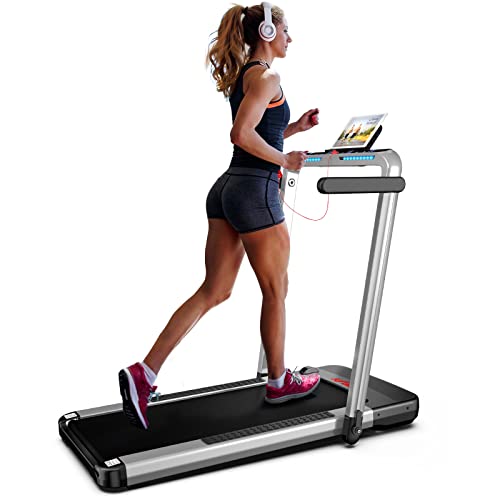Blog entry by Merry Crompton
Treadmills: A Comprehensive Guide to Understanding Their Functionality, Benefits, and Appropriate Selection
Introduction
Treadmills have actually ended up being a staple in modern-day physical fitness routines, both in homes and fitness centers worldwide. They provide a practical and efficient method to maintain cardiovascular health, boost endurance, and assist in weight management. This short article explores the various types of treadmills, their advantages, functions to think about when purchasing, and some FAQs to direct users in making notified choices.
Types of Treadmills
When it comes to choosing a treadmill, it is important to understand the various types offered in the market. Here are the main categories:
1. Manual Treadmills
- Mechanism: These treadmills have a simple design and count on the user's efforts to move the belt.
- Pros: More inexpensive, quieter operation, no electrical power needed.
- Cons: Limited functions, might not supply the very same series of exercise strength.
2. Motorized Treadmills
- System: Tread mill Powered by a motor that drives the belt, permitting users to walk or run at a set rate.
- Pros: Greater variety of speeds and inclines, equipped with numerous features such as heart rate displays and exercise programs.
- Cons: More expensive and might require more maintenance.
3. Folding Treadmills
- System: Designed for those with minimal area, these treadmills can be folded for simple storage.
- Pros: Space-saving, typically motorized, versatile features.
- Cons: May be less long lasting than non-folding models.
4. Business Treadmills
- Mechanism: High-quality machines developed for usage in fitness centers and gym.
- Pros: Built to hold up against heavy usage, advanced features, often consist of guarantees.
- Cons: Pricey and not ideal for home usage due to size.
5. Curved Treadmills
- System: A special style that permits users to propel the belt using their own energy.
- Pros: Offers a more natural running experience, promotes much better running type.
- Cons: More pricey and can be noisier.
| Treadmill Type | Pros | Cons |
|---|---|---|
| Handbook | Inexpensive, no electrical power required | Limited functions |
| Motorized | Variety of speeds, advanced features | Maintenance required |
| Folding | Space-saving, frequently motorized | May lack durability |
| Commercial | Developed to last, professional-grade functions | Expensive |
| Curved | Natural running experience, promotes great kind | Higher cost |
Benefits of Using Treadmills
Treadmills use numerous advantages that can contribute to one's overall fitness and health objectives. A few of these benefits include:
- Convenient Workouts: Treadmills permit users to exercise inside despite weather condition conditions.
- Cardiovascular Health: Regular usage can enhance heart health by increasing stamina and promoting healthy flow.
- Weight Management: Effective for burning calories, which helps in weight loss and management.
- Customizable Workouts: Users can manage speed, slope, and period to develop customized exercise experiences.
- Safety: Treadmills offer a foreseeable surface area, decreasing the threat of falls compared to outside running.
- Multifunctional: Many treadmills come with functions like heart rate monitors, workout programs, and even entertainment systems.
Picking the Right Treadmill
When picking a treadmill, prospective buyers need to consider a number of essential factors:
Features to Consider:
- Motor Power: Typically measured in horsepower (HP), a motor strength of at least 2.5 HP is suggested for severe runners.
- Belt Size: A longer and broader belt accommodates numerous stride lengths, supplying convenience throughout exercises.
- Incline Settings: Adjustable slope functions replicate outside hill running and can increase exercise intensity.
- Weight Capacity: Ensure the treadmill can support the user's weight for safety and durability.
- Console Features: Look for easy to use control panels, workout programs, and Bluetooth compatibility for streaming music or other functions.
Budget plan Considerations
- Under ₤ 500: Entry-level manual treadmills ideal for casual walkers.
- ₤ 500 - ₤ 1,500: Mid-range motorized treadmills that provide more features and much better durability.
- ₤ 1,500 - ₤ 3,000: High-end models with sophisticated innovation, larger motors, and longer guarantees.
- Over ₤ 3,000: Commercial-grade treadmills perfect for regular use in gyms or training centers.
Often Asked Questions (FAQs)
1. How frequently should I utilize a treadmill?
It is suggested to utilize a treadmill a minimum of three to 5 times a week, integrating numerous strength levels for best outcomes.
2. Can I lose weight by using a treadmill?
Yes, constant use of a treadmill can contribute to weight reduction, specifically when combined with a balanced diet and strength training.
3. What is the very best speed to walk on a treadmill for newbies?
A speed of 3 to 4 miles per hour is an ideal range for newbies. It's necessary to start sluggish and gradually increase pace as comfort and endurance improve.
4. Do I require to utilize a treadmill if I currently run outdoors?
Using a treadmill can provide additional advantages, such as regulated environments and differed exercises (slope, periods) that are not always possible outdoors.
5. How do I keep my treadmill?
Routine maintenance consists of lubricating the belt, cleaning up the deck and console, and inspecting the motor for optimal efficiency.
Treadmills are necessary tools for those seeking to enhance their physical fitness levels in a controlled and convenient way. With numerous types readily available, comprehending their features and benefits is essential for making an informed purchase. By thinking about individual exercise needs, area accessibility, and budget plan constraints, individuals can discover the most appropriate treadmill that fits their lifestyle. Integrating treadmill workouts into a well balanced fitness regimen can lead to better health outcomes and a satisfying exercise experience.

